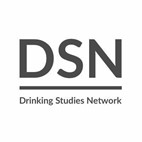Originally designed to mark the tenth anniversary of the Drinking Studies Network’s foundation in 2010, our delayed fourth major international conference took place over three days in November 2021. The ‘Where are we Now’ theme and goal of the conference was to assess the major challenges in our field, both retrospectively and into the future. It was not connected to David Bowie’s evocative song of the same name, but you can listen to this lovely cover version if you want to:
The conference was also an opportunity to reflect on the development of the Network itself over this time, and as we embark on a new chapter in partnership with the Social History of Alcohol and Drugs Journal.
One striking feature of the conference was how we were discussing many of the familiar themes that had been explored through our previous conferences in 2013, 2015 and 2018 – and which are staples of drinking studies scholarship – but doing so with greater levels of nuance and complexity in the models, methodologies and frameworks we were using. Familiar themes included gender, place, time, change, work, health and sociability, amongst others. But there was, for instance, an innovative emphasis on mobility, movement and ephemerality that enhanced our understanding of drinking places, both imagined and real, physical and virtual.
Similarly, thinking about the longer-term trajectories of drinking behaviour by different individuals and groups, in relation to drinking occasions as ‘moments’ in time extended our discussion of drinking temporalities to consider deliberate ‘not-drinking’, and the complex relationship between experiences of sociability and health, both physical and mental, in shaping drinking behaviours.
Secondly, throughout the conference, constructions of ‘ideal’ drinking across different times and spaces kept recurring as subjects of analysis. Topics ranged from imagined ‘ideal drinkers’, to stereotypes about the drinking behaviours of social groups, to the idealisation of specific types of drinking place and drinking cultures. Of course, the construction of ‘ideal’ drinkers, behaviours, places and cultures also has as its flip-side: in the criticism, even demonisation, of those who lie outside the ‘ideal’, and these discussions also featured in the conference programme. Insights about the role of memory, nostalgia, families, and communities of practice in shaping alcohol production, consumption and sociability emerged from these examinations to give lots of food for thought.
There were, of course, some themes that received less attention than they might have done, reflecting areas within the field of drinking studies that still require more investigation. Whilst scholarship in our field is particularly attuned to the ways in which class and gender shape experiences and discourses around drinking, we still have much more to learn about the importance of race and ethnicity. The papers that explored the relationships between alcohol, race and ethnicity in the Americas – one of which grew out of this project on ‘Alcohol, Race and Ethnicity: the United States, Mexico and the Wider World – demonstrated what a fruitful area of research this can be. The next post will discuss that paper, ‘Alcohol, Slavery and Race in Brazil during the Long Nineteenth Century’, in more detail.
The conference also highlighted that we still have a tendency to focus on the consumers of alcohol – or of non-alcoholic drinks – to the neglect of those who work within the drinks trade. We did hear about brewers in several different contexts – from American craft brewing to tepache-makers in seventeenth-century Mexico and female brewers in contemporary Manipur – but the history of drink workers, especially retailers, is ripe for further examination.
Since we opted to hold the conference virtually due to the ongoing impact of the COVID-19 pandemic, it would have been remiss for the pandemic’s effects on drinking practices to go unexamined in the conference programme. Indeed, the pandemic featured prominently in a number of papers, particularly those examining contemporary drinking spaces. Yet it was striking how many of these explorations connected together the larger themes of ‘mobility’ and ‘the ideal’ that were prominent in many different historical contexts as well.
As to the virtuality of the conference itself, while many of us yearned for those informal chats between panels and for a post-conference trip to the actual pub, there were considerable benefits to the online experience. Nearly 90 participants were registered for this conference, where, historically, we’ve had to limit participation to around 50 people. Some participants couldn’t attend all panels, due to time differences, screen fatigue, and life in general. But we surely would not have had such an international line-up of speakers – everywhere from the US west coast to Japan – in a physical conference setting. The characteristic good humour of DSN members also meant that we enjoyed several ‘substantial meal breaks’, launched a revamped Craft & the Artisanal research cluster, and learned how to do virtual drinking (including of the alcohol-free variety) before putting that learning into practice in our virtual pub, the Dog & Salty Nun!
You can see the full conference programme below and details of how to join the Drinking Studies Network (for free) are on our website.


